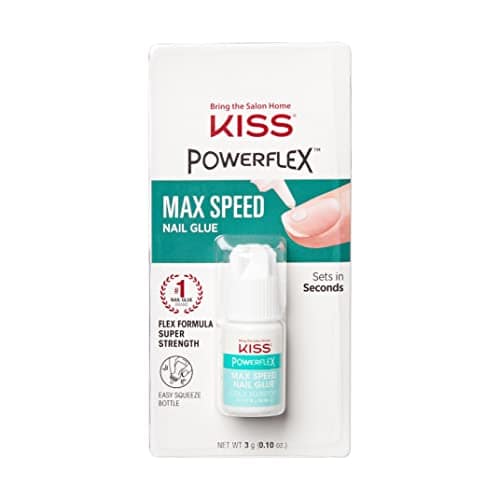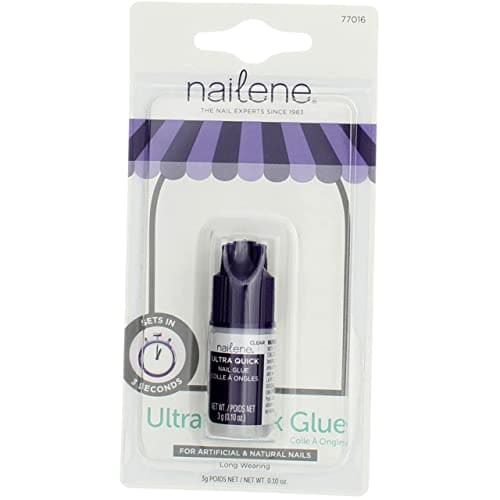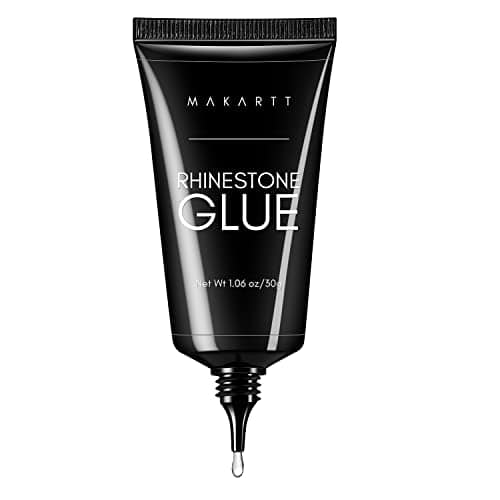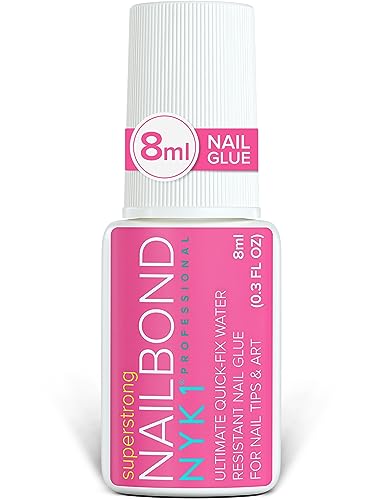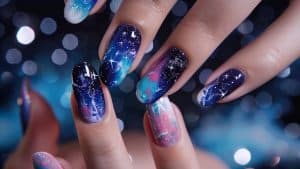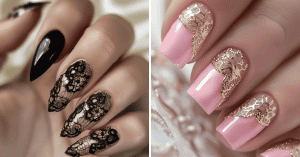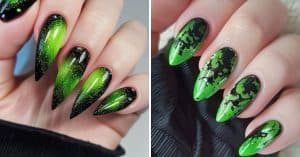Are nails popping off after all that effort? We've all been there! But fret not. We've cracked the code on why your nail glue just won't stick around.
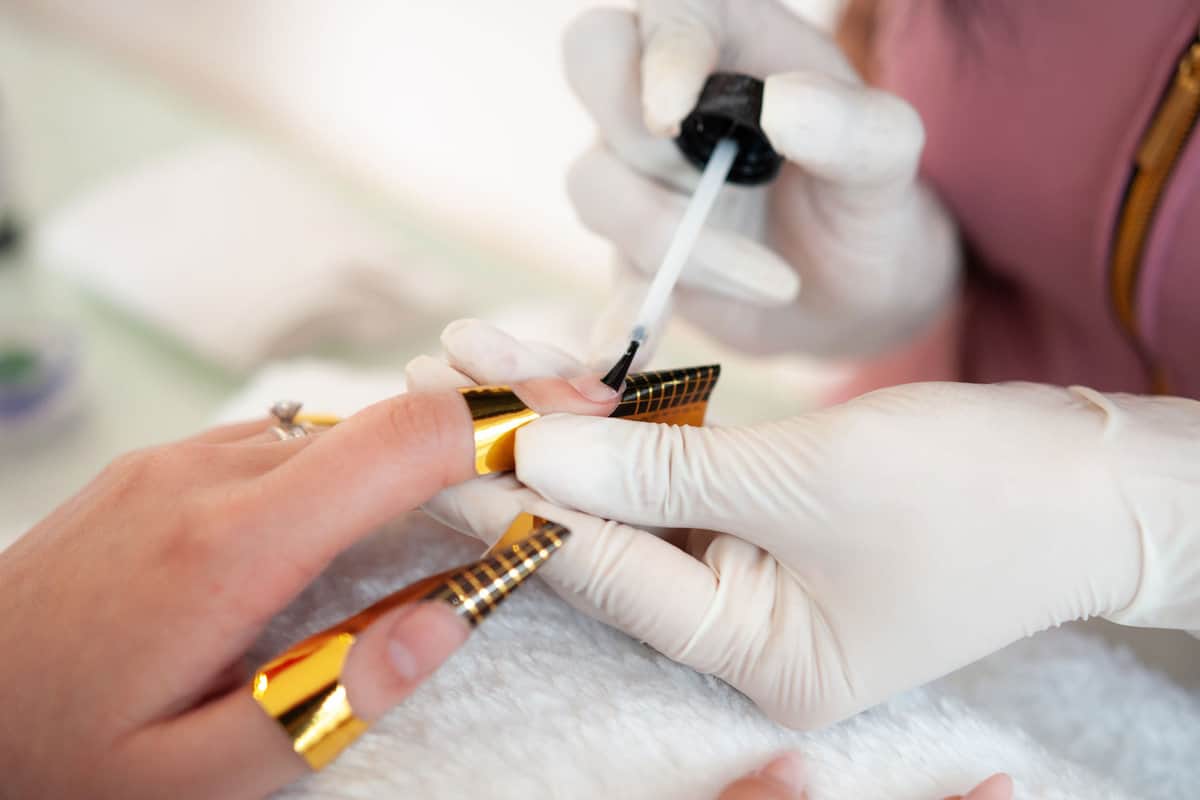
This article may include affiliate links and elements that were carefully created by our team using advanced ai to help you envision the best style advice.
From oily nails to low-quality products, we'll expose the culprits and share foolproof tips to keep those fabulous fakies locked in place. Get ready to bid farewell to nail mishaps and hello to a long-lasting, gorgeous mani that'll turn heads!
What Is Nail Glue Made Of?
Nail glue often contains beta-methoxyethyl cyanoacrylate and octyl cyanoacrylate, which belong to the cyanoacrylate family of strong, fast-acting adhesives. These ingredients are commonly used in superglue and other adhesive formulations for their strong bonding properties, particularly with plastics and metals.
Alongside cyanoacrylate, nail glue may contain polymethyl methacrylate (PMMA), which is included for its plasticizing properties. These ingredients help improve the glue's adhesive properties, allowing for a smoother application process.
It's important to note that nail glue should only be used to attach false nails to the natural nail. It should not be used to repair broken nails or attach other materials to the nail. Doing so can result in damage to the natural nail and may also cause an allergic reaction.
How Does Nail Glue Work?
As mentioned, nail glue contains cyanoacrylates—fast-drying adhesives that immediately bond with the artificial nail. These chemicals react with moisture on the surface or air, forming a solid bond.
The glue molecules link to create long polymer chains, establishing a tight grip between the surfaces. As it dries, the glue hardens, providing a firm hold. During this process, an exothermic chemical reaction occurs, which can generate heat, especially notable during the curing process.
According to this study, this reaction can cause burns, particularly if the nail glue accidentally spills onto clothing or directly on your skin.
So, even if your nail glue isn't sticking well, be careful not to apply too much and always handle cyanoacrylate-based nail glues properly to prevent injuries.
Related article: Is Nail Glue Bad For Your Nails?
5 Common Reasons for Nail Glue Failure
There are several reasons why your nail glue may be failing you. We've listed the five most common causes of nail glue failure below.
1. Expired Products
Nail glues, like many cosmetic products, come with an expiration date. Using an expired product often leads to compromised adhesive properties.
It's always advisable to check the expiration date before purchasing or using a bottle of nail glue. The manufacturer's website may provide the necessary information when the date isn't visible.
2. Quality of Products
The quality of the nail glue can significantly influence its performance. Lower-quality glues might not provide the same level of adhesion as those from reputable brands.
So, it's beneficial to choose trusted brands and, when in doubt, to read user reviews before purchasing to get insights into the product's effectiveness.
3. Application Errors
Even with top-tier nail glue, incorrect application can impede its sticking capability. It's essential to prepare your nails adequately before any application, ensuring they are clean and dry.
The amount of glue applied is equally crucial: neither too much nor too little is ideal. It's best to follow the product's instructions regarding the amount needed.
Additionally, after applying the glue, it's essential to allow sufficient drying time before engaging in any activities that might exert pressure on the nails. Applying glue too close to the cuticle can also lead to problems, such as air pockets or the bond lifting off prematurely.
4. Environmental Factors
External environmental conditions can have an impact on nail glue adhesion. High humidity levels, for instance, can interfere with the glue's bonding capability. If you reside in a humid region, it might be helpful to consider using a dehumidifier when applying nail glue.
Extreme temperatures, whether very hot or cold, can also alter the glue's adhesive strength. It's advisable to avoid exposing freshly glued nails to such conditions.
5. Contamination
Contamination can also cause nail glue to fail. Ensure your nails are completely clean and free of oils or lotions before applying the glue.
How Do You Make Nail Glue Last Longer On Nails?
You can do a few things to help improve adhesion and keep your press-on nails in place for longer. Here are some nail glue recommendations for stronger adhesion:
Step 1: Clean and Prep Your Nails Properly
As mentioned, before applying nail glue, ensure your nails are clean and free of oils or debris.
Use a nail polish remover to remove old polish or oils, and then wash your hands with soap and water. Dry your nails thoroughly with a clean towel before applying the glue.
Step 2: Using the Right Amount of Glue
Using too much or too little glue can lead to problems with adhesion. Aim for a thin, even layer of nail glue on your nails.
You want to use just enough glue to cover the entire back of the press-on nail without it overflowing onto your skin. Make sure you press the artificial nails firmly onto your natural nails for around 30 seconds for a strong bond.
Use a toothpick or the edge of a nail file to apply the glue precisely, ensuring an even spread that will hold securely.
Continue reading: How Much Glue To Put On Fake Nails?
Step 3: Seal the Edges
To prolong the life of your nail glue, sealing the edges of your artificial nails with a clear top coat is crucial. Doing so creates a barrier that prevents water and other substances from getting underneath the nails, which can cause lifting or weakening of the glue.
Apply a top coat around the edges and under the tips if possible, allowing it to dry thoroughly.
Step 4: Avoid Water and Heat
Keeping your nails away from water and heat is essential, especially within the first few hours post-application.
Avoid soaking your hands in water for extended periods, and try not to expose your nails to high heat or direct sunlight. These elements can deteriorate the glue and cause your artificial nails to lift or fall off.
If you need to wash or clean dishes, wait until your nails are completely dry or wear gloves to protect them.
Step 5: Maintenance
Regular maintenance is key to making your nail glue last longer. Daily checks for any lifting or loose edges will help you catch any issues before they worsen.
If you spot a lifted edge, carefully apply a small amount of glue underneath, then press down firmly to resecure the artificial nail. Keeping the glue bond strong will help maintain the appearance and longevity of your artificial nails.
Tips When Adding Nail Glue
When adding nail glue, it's essential to follow specific tips to ensure your nails stay in place and look great.
Here are some things to help you get the most out of your nail glue:
- Not all nail glues are created equal. Look for a high-quality nail glue that is designed explicitly for press-on nails.
- Apply a small amount of glue to the tip of your nail, then press the nail tip onto your natural nail.
- Avoid moving your fingers too much while the glue is drying, which can cause the nail tip to shift or become loose.
- Make sure the glue is completely dry before doing anything with your hands. This will help prevent the nail tip from lifting or coming off.
- Always replace the cap tightly on the glue bottle to prevent it from drying out.
Also read: How To Remove Nail Glue From Fake Nails [2 Methods Explored]
Nail Glue Recommendations for Stronger Adhesion
If you're on the hunt for a nail glue that excels in holding power, let's delve into four highly-rated nail glue products, each boasting distinctive strengths and formulations. Here's a closer look at these products and what users have to say about them:
1. Kiss Maximum Speed Nail Glue
Kiss Maximum Speed Nail Glue is renowned for its strength and rapid-drying capabilities. Notably, its ingredients include Ethyl Cyanoacrylate, Polymethyl Methacrylate, Isopropyl Alcohol, and more, offering transparency.
Users appreciate that it dries in just 5 seconds, making it a quick solution for nail adhesion.
The patented PowerFlex™ technology ensures a secure hold, and many users report that the glue can last for 1-2 weeks even with activities like dishwashing and showering.
2. Nailene Ultra Quick Nail Glue
The Nailene Ultra Quick Nail Glue is a popular choice for both artificial nail application and natural nail repair. It contains ingredients such as Ethyl Cyanoacrylate and Polymethyl Methacrylate, which contribute to its adhesive properties.
It impresses users with its rapid drying (5 seconds or less) and strong bond, often keeping nails secure for up to a week. While many users commend its longevity, a few mention that it can be a bit messy during application.
3. Makartt Nail Glue
Makartt Nail Glue stands out as a professional-grade adhesive suitable for various nail applications, including press-on nails and nail art decorations. Its primary ingredient, Ethyl 2-cyanoacrylate, is known for its strong adhesive properties.
Users appreciate its quick drying time, often in five seconds or less, and its ability to provide a secure hold for more than 14 days.
Many have found it effective for keeping press-on nails in place for weeks. While it generally receives positive reviews, some users have noted that achieving precise applications may take some practice.
4. NYK1 Nail Bond Super Strong Nail Tip Bonding Adhesive
The NYK1 Nail Bond Super Strong Nail Tip Bonding Adhesive is a salon-quality professional nail glue known for its precision applicator and extra-strong, long-lasting hold.
Users praise its strong bonding capabilities, with some reporting that press-on nails can last for 3-4 weeks or more. It's water-resistant and has anti-fungal properties, adding to its appeal.
While specific ingredients are not listed, it's noted that the formulation does not contain Alpha Cyanoacrylate, which can turn green when exposed to water.
Final Thoughts on Nail Glue Troubles
If you're still having trouble getting your nail glue to stick, consider trying a different brand or type of glue. Some glues are formulated for specific nail types or may work better with certain types of fake nails.
Be sure to follow the instructions on the glue packaging and give the glue enough time to dry before using your hands. With these tips and tricks, you'll have beautiful, long-lasting nails in no time.

